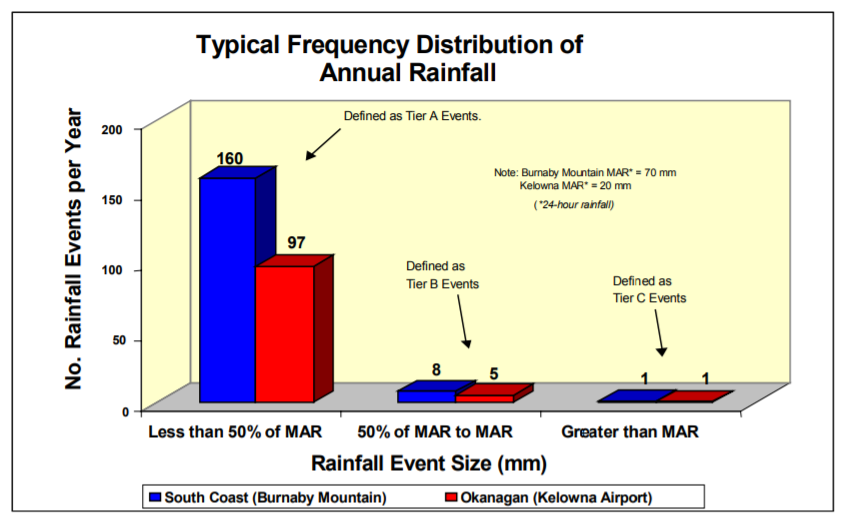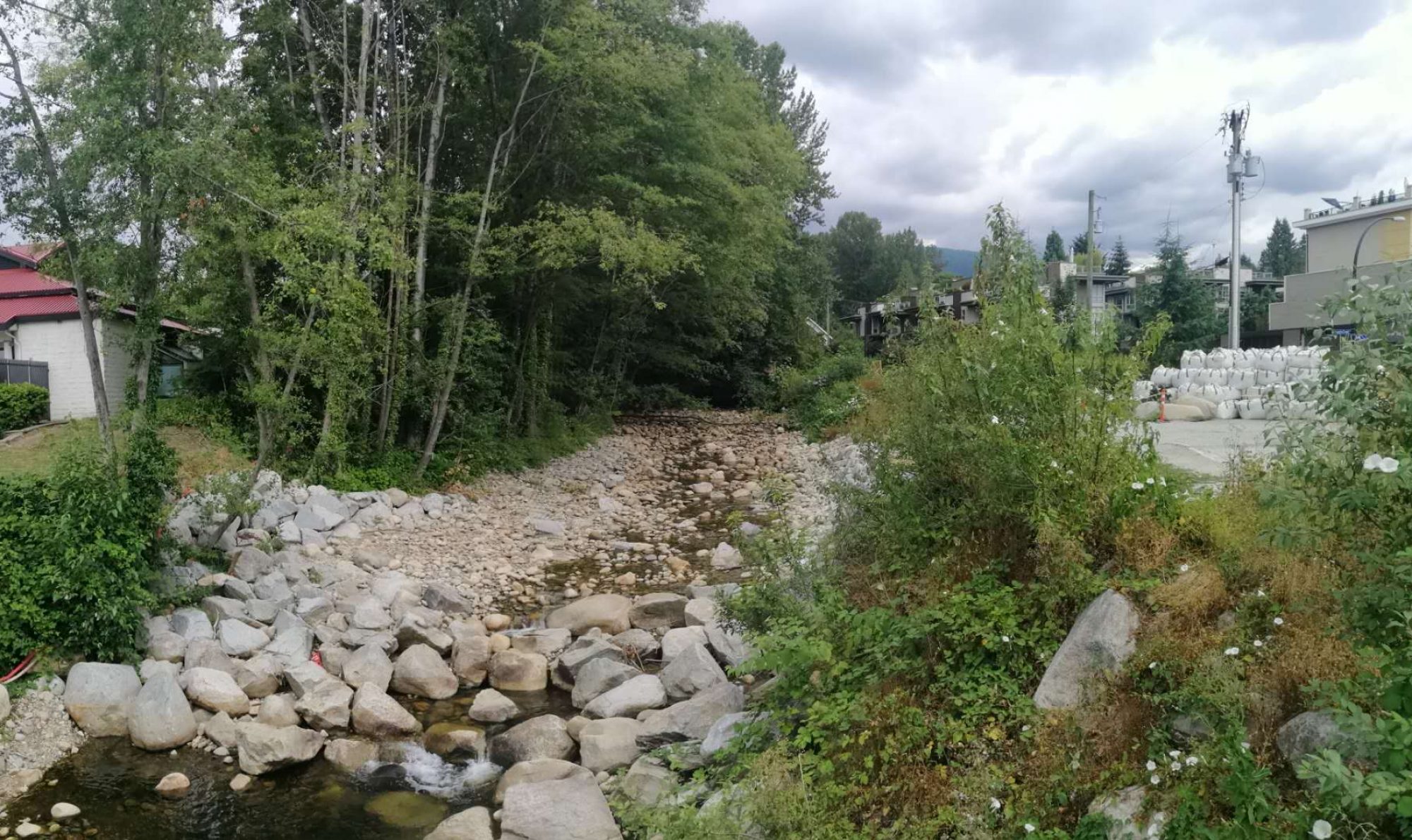LID practices address rainfall capture (source control), runoff control (detention), and flood risk management (contain and convey). Each component requires certain standards or criteria to be met as a target for evaluation of LID practices’ performances. The designed targets are derived from a thorough precipitation spectrum analysis. The Mean Annual Rainfall (MAR), estimated as the 2-year, 24-hour duration storm event, is typically adopted to describe the precipitation spectrum. The Stormwater Planning: A Guidebook for British Columbia categorized rainfall volumes into Tier A, Tier B, and Tier C, as shown in the table below for North Shore where the study site is located. Tier A events constitute approximately 90% of all storm events and Tier B events constitute the remaining 10%. Tier C events refer to precipitation exceeding the MAR, which might not occur in a given year (Government of British Columbia, 2002). The guidebook sets the runoff reduction targets as managing large Tier B rainfall events (storing 50% to 100% of MAR runoff and releasing at a rate equivalent to approximately undisturbed forest conditions).
Summary Tiers A, B and C Events in North Shore
| Event | Definition | 2-Year 24-Hour precipitation (mm) |
| Tier A | The rainfall events that Less than half the size of a MAR. | < 40 mm |
| Tier B | The rainfall events that are greater than half the size of a MAR, but smaller than a MAR. | 40 – 80 mm |
| Tier C | The extreme rainfall events exceeding a MAR. | > 80 mm |
The figures below illustrate typical annual rainfall distribution in both coastal and interior conditions. Tier A events account for the majority of rainfall events and rainfall volume, regardless of the location. Although Tier B and Tier C events are infrequent, managing these events has always been a priority, as well as capturing small events at source to mitigate the negative impacts of surface runoff.


Image Source: Government of British Columbia. (2002). Stormwater Planning: A Guidebook for British Columbia.
50% of the MAR equals the approximate value of the ‘6-month storm’ in Washington State. Prior to the late 1990s, the focus of urban stormwater management was on the extreme events that rarely occurred (Tier C events). The concept of the ‘6-month storm’ was introduced in Washington to set criteria for managing the six to ten runoff events per year that have the most potential to cause urban flooding and potential watercourse erosion (i.e. Tier B events) (as cited in Government of British Columbia, 2002). The tiered approach marks a shift from traditional stormwater management practice.

 Follow
Follow